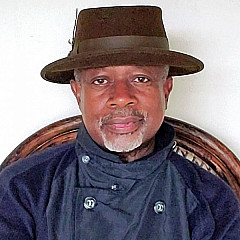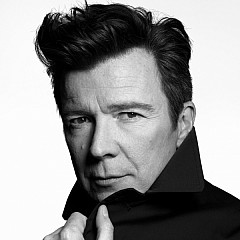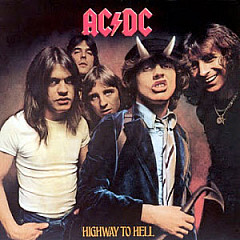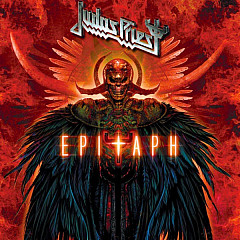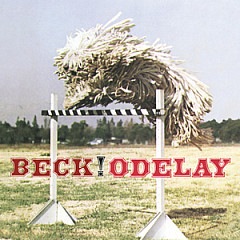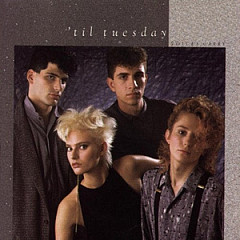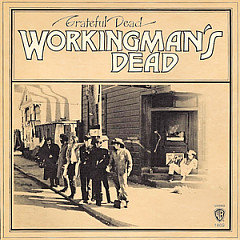Formed in 1984 and comprised of singer Corey Glover, guitarist Vernon Reid, bassist Muzz Skillings (later replaced by Doug Wimbish), and drummer Will Calhoun, Living Colour was also unafraid to touch upon a multitude of different musical styles on their albums - back in an era when one-dimensional rock ruled the charts and airwaves.
When we spoke with Glover, he was gearing up for a solo tour with Doug Pinnick of King's X and putting the finishing touches on Living Colour's sixth studio album, Shade.
 Greg Prato (Songfacts): How did the idea come up to do a tour with Doug Pinnick?
Greg Prato (Songfacts): How did the idea come up to do a tour with Doug Pinnick?Corey Glover: Doug and I have been friends for a very long time. As a matter of fact, a couple of years ago, I was doing a tour of Jesus Christ Superstar, and it coincided with a Living Colour date, so he took my place on the Living Colour date. We toured with King's X a few years ago - we've known each other for a long time. So when the opportunity came for us to get together and do some work, I jumped on the chance.
Songfacts: And I understand Living Colour is working on a new album.
Glover: We are 85% of the way there. At this point, we should be finished within a month or so, and get it out in the fall. The album is called Shade. Really, for the most part, what we were trying to do was explore the idea of the blues and modern-day blues - a deconstruction of the blues.
Songfacts: You said the album should arrive in the fall?
Glover: We're shooting for the fall. We've been working on this record for the past couple of years, and it's been happening in fits and starts. So we want to get it right, and it takes some doing.
Songfacts: When it comes to songwriting, do you prefer writing songs on your own or in collaboration with others?
Glover: I prefer collaboration, actually. Part of the reason is that I'm not really that good a player compared to the people I find myself playing with. I'm not as proficient on the guitar as say, Vernon, and I am in no way a piano player like the piano players that I know. So, I feel like the collaborative process usually gets the point across a lot more.
Songfacts: By and large, how does the songwriting process work in Living Colour?
 Glover: Sometimes it's collaborative - it's all over the place. Sometimes, somebody comes in with the song fully fleshed out, and then we put our interpretation on it. Sometimes somebody comes up with a groove and we expand upon it - we just play, and things come out of it. Sometimes, they're just parts, and somebody comes up with other parts. Sometimes, it's just a melodic line or lyrics, and we go from there.
Glover: Sometimes it's collaborative - it's all over the place. Sometimes, somebody comes in with the song fully fleshed out, and then we put our interpretation on it. Sometimes somebody comes up with a groove and we expand upon it - we just play, and things come out of it. Sometimes, they're just parts, and somebody comes up with other parts. Sometimes, it's just a melodic line or lyrics, and we go from there.Songfacts: What are some memories of filming the video for "Cult of Personality"?
Glover: Really, it was a blur. In a real way - not just because it was 27 years ago. When we had finished making Vivid, the first single that came out was "Middle Man," and it did OK. And we were insisting that "Cult of Personality" be the next single - we really thought "Cult of Personality would be a great single. We knew we had to make a video, and one of our friends who is a photographer and a filmmaker, Drew Carolan, who we'd known for years, we went to him and said, "Look, let's make this video."
He said, "What's great about you guys is that you play live, and you play this stuff really proficiently. So why don't we capture that." We went back and forth over it, and in the meantime, we're on the road. We'd been on the road forever at that point. We filmed it two days after arriving back home from Europe, and then the day after we filmed the video, we had to go back on the road in the States. So we got home, and it was like, "OK, this is what we're going to do. We're going to go to the Hammerstein Ballroom, we're going to shoot some of that. Drew has some archive footage of us playing at CBGB's, we're going to put that together." And he came up with the concept.
It was sort of rushed, and we spent all day filming this thing with different angles and different kind of shots. We spent the good part of a whole day there, and then the next day, we packed up and left. It felt like it was a continuation of the tour, really, because we were playing a gig, except we were playing the same song over and over again.
It was kind of a blur, but what was kind of interesting were the elements that Drew put in there, that we kind of dug. The little girl watching television was like a foreshadowing of the world that we lived in, that people got their information from television, not from actually being in the world. We were all "children of the television age." Our information came first-hand that way, and that's what the video was trying to talk about: the seminal moments in your life that for the most part you saw on television. Y'know, you weren't in Dallas in 1963, but you know about it because you saw it on television. You weren't at Cape Canaveral when man landed on the moon. You weren't in Selma, Alabama, crossing the Edmund Pettus Bridge. But you saw it all on television. You saw all these things via this other medium, so there was sort of a distance between you and them, and you and history.
 Drew Carolan, who directed the "Cult of Personality" video, is a renown photographer who studied under Richard Avedon. The photo of Corey at the top of the page and the one to the right are part of his collection "The Face," which you can view at drewcarolan.com. They were shot in Hollywood in 1989.
Drew Carolan, who directed the "Cult of Personality" video, is a renown photographer who studied under Richard Avedon. The photo of Corey at the top of the page and the one to the right are part of his collection "The Face," which you can view at drewcarolan.com. They were shot in Hollywood in 1989.Drew gave us this account of the video shoot:
I had done all of Living Colour's early publicity photographs and the inside photography for the first album Vivid. When they approached me to do a music video for them I figured a performance was the best way to present the band. Living Colour is an amazing live band and you don't forget one of their shows. My idea was to give the sense of them performing live, to have longer takes of their performance and assault the viewer with a barrage of iconic historical images as seen through the eyes of an adolescent.
The Hammerstein Ballroom was available for a controlled performance but I have to admit I was nervous because the stage was so big. I was used to seeing Living Colour perform at places like CBGB, Tramps and the 930 which are tiny. The Super 8 footage helped intimate the performance, but quite honestly Corey's performance was so explosive and him feeding off of Vernon's guitar playing and the rest of the band negated any concerns that I had of the space. As the video performance culminates, the images become faster and faster, overloading the child's comprehension. She shakes her head in disbelief of what she sees and reaches out and shuts it all off!
I was happily surprised to see the video get into heavy rotation on MTV. I never figured that would happen because corporate music labels were hung up on the black rock band thing. It wound up winning three MTV music awards in 1989 so I guess they got over it.
At the time there was no credit for directors so the general public had no idea who I was but the video opened doors for me to work with other bands and that's what mattered most.
Drew also directed the videos for the B-52's "Channel Z" and The Red Hot Chili Peppers' "Knock Me Down" and "Higher Ground" (with Bill Stobaugh).
Songfacts: I recall once hearing that the lyrics to the song "Middle Man" were from a suicide note. Is it true?
Glover: Yes, they were. I was maybe 16, 17 years old, and I was just fed up with everything - as 16, 17-year-olds usually are! I was feeling just down and depressed. When I initially started writing it, it was going to be an open letter to anybody that found me, that I was tired of being caught up in everybody's mess. I was tired of being in the middle of things. I'm tired of being the middle man. And then in the midst of me working this out in my head, it dawned on me that this was not a bad place to be in some cases, that at least I was somewhere. It doesn't mean that it's the best place in the world, but it doesn't mean it's the worst, either. So it actually got me out of the idea that I needed to stop being. It changed my life.
Songfacts: What was the inspiration behind the song "Time's Up"?
Glover: It was about the environment, and looking at the world as it was even then. This was the '90s, and it just seemed very bleak. Like we didn't have much more time to really fix these things, that we needed to look at the world that we live in. That if we are the stewards of this world, we're not doing a very good job.
Songfacts: What about the song "Go Away"?
Glover: At that point, it was like, disaster saturation, and we were all faced with this daunting task of having to do all this stuff. And really, your average human being has so much capacity for that kind of thing. You have a level of how much you can deal with that.
It's a cynical view of, "I've done enough." We really haven't done enough.
Songfacts: And what was the inspiration behind "Leave It Alone"?
Songfacts: Lastly, what are some memories of when Living Colour toured with the Rolling Stones in 1989?
Glover: That was amazing. At that point, we were still a fledgling new band. We were still on our first record, we were still on the road, and we were still touring in vans across the country - up until the point we started on the Stones tour, when all of a sudden, we got a shiny new tour bus.
We were playing in stadiums that could have fit all the venues we had previously played, so it was a real shock to the system, like, We're playing on stages that were really small to playing on a stage that is half a football field wide. It's kind of scary, like, How do you fill up all this space?
April 2, 2015. For more Corey, visit facebook.com/coreyglovermusic
For more Living Colour, visit livingcolour.com
More Songwriter Interviews


